“Unlock the Mystery: Discover the Science Behind the Purr of Contentment!”
Introduction
Cats are known for their mysterious and often unpredictable behavior, but one thing that is certain is that cats purr. This sound is often associated with contentment and pleasure, but why do cats purr? The answer is not as simple as it may seem. In fact, the science behind why cats purr is quite complex and fascinating. This article will explore the various theories behind why cats purr and the potential benefits of this behavior. We will also discuss the different types of purrs and the various ways cats use them to communicate. By the end of this article, you will have a better understanding of why cats purr and the science behind this mysterious sound.
The Physiology of Purring: How Cats Make the Mysterious Sound
Cats are known for their mysterious purring sound, which is often associated with contentment and relaxation. But what is the physiology behind this sound? How do cats make this noise?
The purring sound is created by the vibration of the vocal cords, which are located in the larynx. When a cat inhales and exhales, the vocal cords vibrate, producing a low-pitched sound. This sound is then amplified by the cat’s nasal cavities and throat.
The frequency of the purr is usually between 25 and 150 Hertz, which is the same frequency range as many therapeutic sound machines. This frequency range is believed to have a calming effect on both cats and humans.
The act of purring is thought to be a self-soothing behavior for cats. It is believed that cats purr when they are content, but they also purr when they are in pain or feeling stressed. This suggests that purring may be a way for cats to cope with difficult situations.
Purring is also thought to be a way for cats to communicate with each other. Cats may purr to show affection or to express their needs. It is also believed that cats may purr to show submission or to signal that they are not a threat.
The physiology of purring is still not fully understood, but it is clear that this mysterious sound has a powerful effect on both cats and humans. It is a sound that is often associated with contentment and relaxation, and it is a sound that cats use to communicate with each other and with us.
Exploring the Benefits of Purring: What Does it Do for Cats?
Purring is a common sound that cats make when they are content and relaxed. It is a low-pitched, rhythmic sound that is often described as a purr-like hum. While the exact mechanism of purring is still unknown, it is believed to be a form of self-soothing behavior that cats use to reduce stress and anxiety.
The benefits of purring are numerous. For cats, purring can be a way to express their emotions and communicate with other cats. It can also be used to show affection and bond with their owners. Additionally, purring can be a form of self-healing. Studies have shown that cats who purr have lower levels of stress hormones and higher levels of endorphins, which can help reduce pain and promote healing.
Purring can also be beneficial for cats’ physical health. The vibrations created by purring can help strengthen bones and muscles, as well as improve circulation. This can help cats recover from injuries more quickly and reduce the risk of developing certain diseases.
Finally, purring can be beneficial for cats’ mental health. Purring can help cats relax and reduce stress, which can help them cope with difficult situations. It can also help cats feel more secure and comfortable in their environment.
Overall, purring is a beneficial behavior for cats. It can help them express their emotions, bond with their owners, and promote physical and mental health. Therefore, it is important to recognize and appreciate the benefits of purring and to provide cats with a safe and comfortable environment in which they can purr.
The Evolution of Purring: How Did Cats Develop the Ability?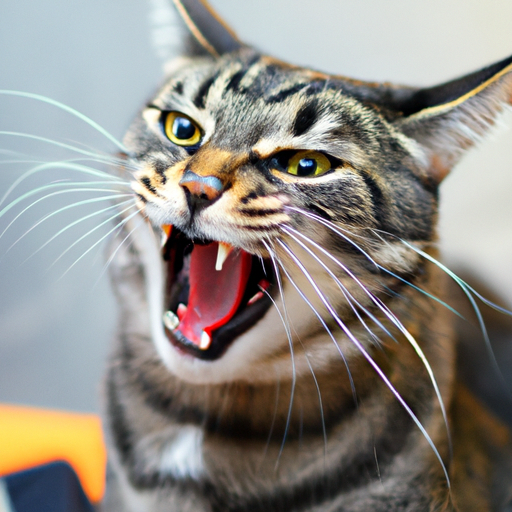
Purring is one of the most recognizable and beloved sounds of cats. It is a low, continuous, rhythmic sound that cats make when they are content and relaxed. But how did cats develop the ability to purr?
The exact evolutionary history of purring is still unknown, but scientists have several theories. One theory suggests that cats evolved the ability to purr as a way to communicate with their mothers and other cats. This would have allowed them to signal their presence and location to their mothers and other cats without making loud noises that could attract predators.
Another theory suggests that cats evolved the ability to purr as a way to soothe themselves and others. This would have allowed cats to calm themselves and other cats in stressful situations. This theory is supported by the fact that cats often purr when they are injured or in pain.
Finally, some scientists believe that cats evolved the ability to purr as a way to strengthen their bones and muscles. This would have allowed cats to heal faster and become stronger. This theory is supported by the fact that cats purr at a frequency that is known to promote bone and muscle healing.
While the exact evolutionary history of purring is still unknown, it is clear that cats have developed this ability over time. It is likely that cats evolved the ability to purr as a way to communicate, soothe themselves and others, and strengthen their bones and muscles. Whatever the reason, purring is one of the most beloved sounds of cats and is sure to remain a part of their lives for many years to come.
Purring and Human-Cat Bonding: How Does it Affect Our Relationship?
The purr of a cat is one of the most recognizable and beloved sounds in the world. It is a sound that has been associated with cats for centuries, and it is a sound that has been known to evoke feelings of comfort and contentment in humans. But what is the purr, and how does it affect our relationship with cats?
The purr is a low-frequency sound that cats make when they are content and relaxed. It is believed to be a form of self-soothing, as cats often purr when they are being petted or cuddled. The sound is produced by the larynx and diaphragm, and it is believed to be a form of communication between cats and their owners.
The purr has been linked to a number of positive effects on humans. Studies have shown that the sound of a cat purring can reduce stress and anxiety levels in humans, as well as lower blood pressure and heart rate. It has also been linked to improved mood and increased feelings of wellbeing.
The purr has also been linked to the development of a strong bond between cats and their owners. Cats that purr often are more likely to be affectionate and trusting of their owners, and they are more likely to form strong attachments. This bond can be beneficial for both cats and humans, as it can lead to improved physical and mental health for both parties.
In conclusion, the purr of a cat is a sound that has been associated with cats for centuries, and it is a sound that has been known to evoke feelings of comfort and contentment in humans. It has been linked to a number of positive effects on humans, including reduced stress and anxiety levels, improved mood, and increased feelings of wellbeing. It has also been linked to the development of a strong bond between cats and their owners, which can be beneficial for both parties.
Purring and Health: What Does it Mean for a Cat’s Well-Being?
Purring is a common sound that cats make, and it is often associated with contentment and happiness. However, purring can also be a sign of a cat’s health and well-being. In this article, we will explore the various meanings of purring and how it can be an indicator of a cat’s health.
Purring is a low-pitched, continuous sound that cats make when they are content and relaxed. It is believed that cats purr to communicate with their owners and other cats, as well as to express their feelings of pleasure and contentment. However, purring can also be a sign of a cat’s health. Studies have shown that cats purr when they are in pain or feeling stressed, as a way to soothe themselves. This suggests that purring can be a sign of a cat’s emotional and physical well-being.
Purring can also be a sign of a cat’s physical health. Cats purr when they are healing from an injury or illness, as the vibrations from the purring can help to reduce inflammation and promote healing. Additionally, purring can help cats to regulate their breathing and heart rate, which can be beneficial for cats with respiratory or heart conditions.
In addition to being a sign of a cat’s health, purring can also be beneficial for humans. Studies have shown that the vibrations from a cat’s purr can help to reduce stress and anxiety in humans, as well as lower blood pressure and improve overall mood.
Overall, purring is an important indicator of a cat’s health and well-being. It can be a sign of contentment and pleasure, as well as a sign of physical and emotional distress. Additionally, purring can be beneficial for humans, as it can help to reduce stress and improve overall mood. Therefore, it is important to pay attention to your cat’s purring and take note of any changes in their purring patterns, as this can be an indication of their health and well-being.
Q&A
1. What is the purpose of a cat purring?
The primary purpose of a cat purring is to communicate with other cats and humans. It is believed that cats purr to show contentment, pleasure, and even to express pain. Purring can also be used as a form of self-soothing.
2. How does a cat purr?
A cat purrs by vibrating the muscles in its larynx. This vibration causes the vocal cords to vibrate, producing the sound of a purr.
3. What frequency does a cat purr at?
Most cats purr at a frequency of 25 to 150 Hertz.
4. Are there any health benefits to purring?
Yes, there are some potential health benefits to purring. Purring has been linked to improved bone density, healing of wounds, and even stress relief.
5. Do all cats purr?
No, not all cats purr. Some cats, such as the cheetah, do not purr.
Conclusion
In conclusion, cats purring is a complex behavior that is still not fully understood. It is believed that cats purr for a variety of reasons, including to show contentment, to communicate with other cats, and to heal themselves. While the exact science behind why cats purr is still being studied, it is clear that purring is an important part of a cat’s life and is a behavior that should be respected and appreciated.



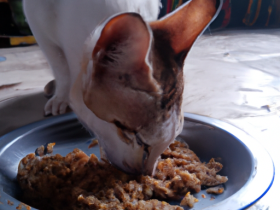
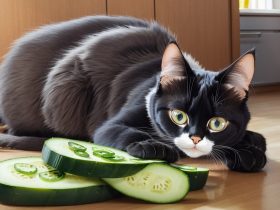
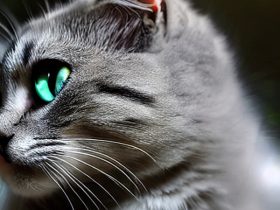

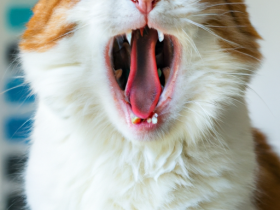
Leave a Reply
View Comments